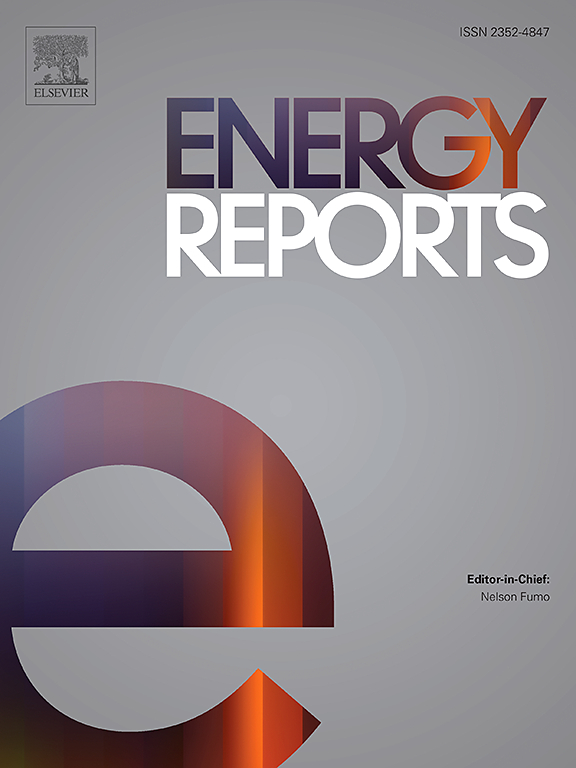Optimizing technological configurations in residential energy systems with vehicle-to-home integration and community-level power sharing
IF 4.7
3区 工程技术
Q2 ENERGY & FUELS
引用次数: 0
Abstract
Distributed energy technologies, such as photovoltaic (PV), stationary storage batteries (SBs), and vehicle-to-home (V2H) systems, are expected to be introduced in pursuit of carbon neutrality in the residential and transportation sectors. This study developed the model of a two-tiered energy system to optimize technological configurations and examined the impacts of installed capacities of PV and SBs, along with various vehicle types, on the economic and environmental performance, stability, and efficiency of residential energy systems. The primary contribution of this research lies in its comprehensive analysis of energy systems that incorporate bidirectional power supply between vehicles and residences, as well as power sharing among multiple households within a community. The simulation results revealed substantial benefits from the incorporation of V2H systems and SBs, which notably reduced annual energy costs by approximately 30 % and CO2 emissions by approximately 40 % in scenarios leveraging community electricity sharing, compared to scenarios without such flexibility. This integration significantly enhanced the self-consumption and self-sufficiency rates of residential energy systems by approximately 10 %, illustrating the efficacy of community-level electricity sharing combined with the charging and discharging capabilities of vehicles. This strategy not only optimizes resource use but also reduces dependency on external power supplies, thereby enhancing overall energy efficiency.
优化住宅能源系统的技术配置,实现车辆到户集成和社区级电力共享
为了在住宅和交通领域实现碳中和,预计将引入分布式能源技术,如光伏(PV)、固定蓄电池(SB)和车到户(V2H)系统。本研究建立了一个双层能源系统模型,以优化技术配置,并考察了光伏和 SB 以及各种车辆类型的装机容量对住宅能源系统的经济和环境绩效、稳定性和效率的影响。这项研究的主要贡献在于对能源系统进行了全面分析,其中包括车辆与住宅之间的双向供电,以及社区内多个住户之间的电力共享。模拟结果表明,在利用社区电力共享的方案中,与没有这种灵活性的方案相比,整合 V2H 系统和 SB 可带来巨大效益,每年的能源成本明显降低约 30%,二氧化碳排放量减少约 40%。这种整合将住宅能源系统的自用率和自给率大幅提高了约 10%,说明了社区级电力共享与汽车充放电功能相结合的功效。这一战略不仅优化了资源利用,还减少了对外部电源的依赖,从而提高了整体能源效率。
本文章由计算机程序翻译,如有差异,请以英文原文为准。
求助全文
约1分钟内获得全文
求助全文
来源期刊

Energy Reports
Energy-General Energy
CiteScore
8.20
自引率
13.50%
发文量
2608
审稿时长
38 days
期刊介绍:
Energy Reports is a new online multidisciplinary open access journal which focuses on publishing new research in the area of Energy with a rapid review and publication time. Energy Reports will be open to direct submissions and also to submissions from other Elsevier Energy journals, whose Editors have determined that Energy Reports would be a better fit.
 求助内容:
求助内容: 应助结果提醒方式:
应助结果提醒方式:


